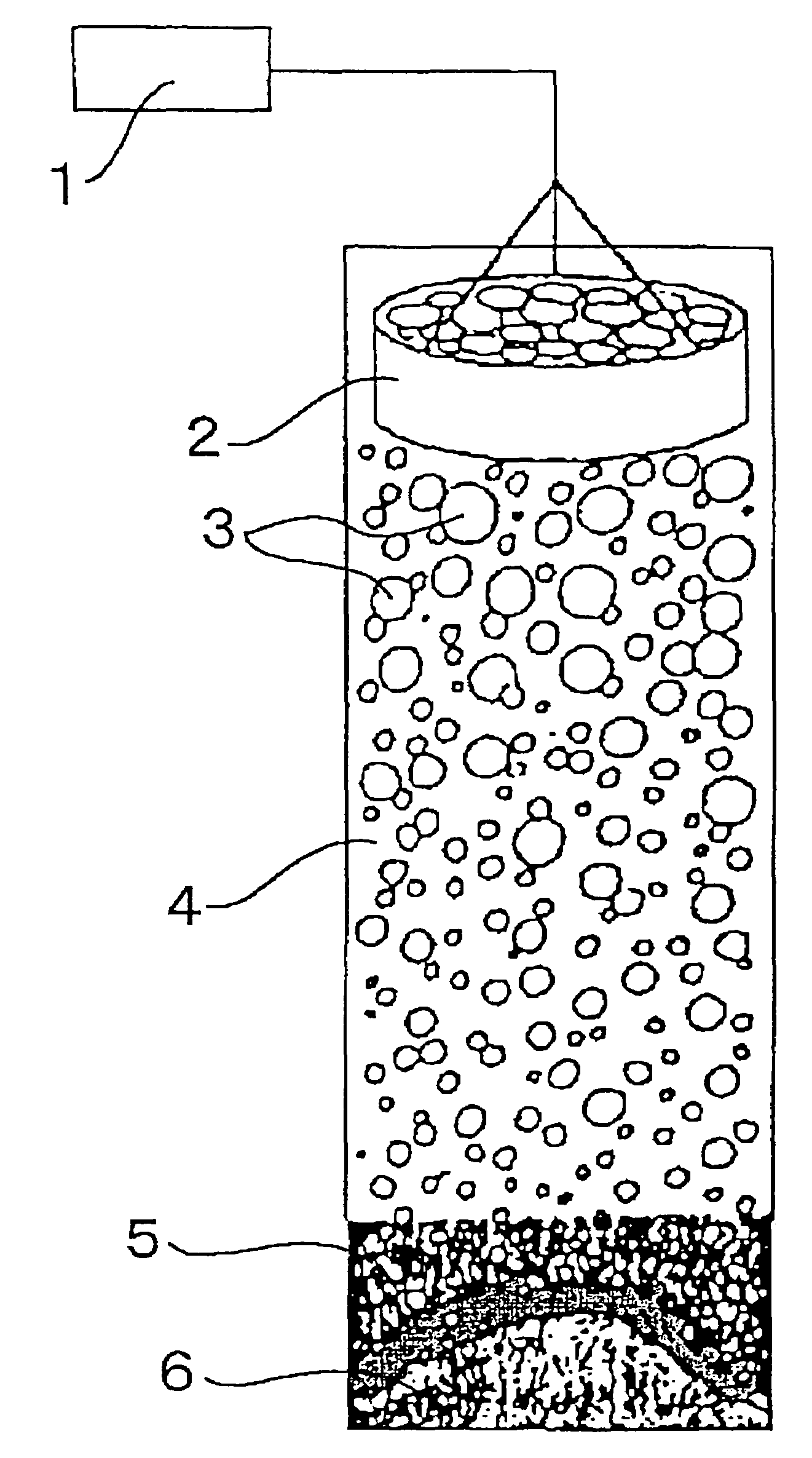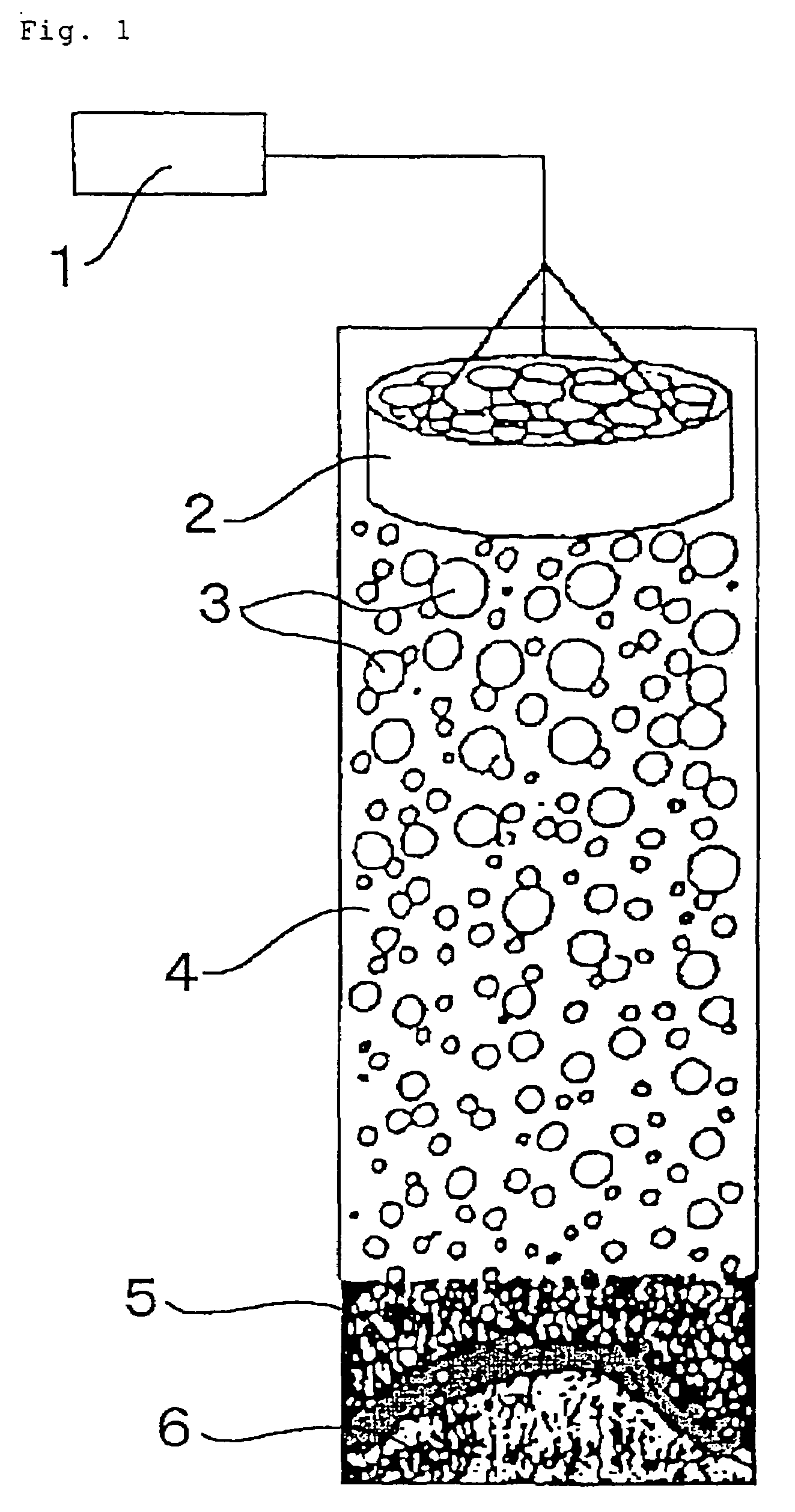Concrete composition method of producing concrete compositions and cement admixture
a technology of concrete composition and cement admixture, which is applied in the field of concrete composition, a method of producing concrete composition, and cement admixture, can solve the problems of increasing the amount of air entrapped gradually, increasing the difficulty of achieving the desired level of concrete strength, and increasing the amount of air entrapped. it can achieve excellent freeze-thaw durability, good quality, and excellent strength and durability
- Summary
- Abstract
- Description
- Claims
- Application Information
AI Technical Summary
Benefits of technology
Problems solved by technology
Method used
Image
Examples
production example 1
[0158]A glass reaction vessel equipped with a thermometer, stirrer, dropping funnel, nitrogen inlet tube and reflux condenser was charged with 339.6 g of water, the reaction vessel inside atmosphere was substituted with nitrogen with stirring, and the charge was heated to 80° C. in a nitrogen atmosphere. Then, a monomer-comprising aqueous medium (503.5 g) composed of 333.6 g of methoxypolyethylene glycol monomethacrylate (average number of moles of ethylene oxide added: 25), 66.4 g of methacrylic acid, 100 g of water and 3.5 g of 3-mercaptopropionic acid as a chain transfer agent was added dropwise over 4 hours and, in parallel, an aqueous solution (46 g) comprising 4.6 g of ammonium peroxodisulfate was added dropwise over 5 hours. Thereafter, the temperature was further maintained at 80° C. for 1 hour to drive the polymerization reaction to completion, whereby a copolymer (1) with a weight average molecular weight of 23,800 was obtained in the form of an aqueous medium solution com...
production example 2
[0189]A glass reaction vessel equipped with a thermometer, stirrer, dropping funnel, nitrogen inlet tube and reflux condenser was charged with 661.5 g of water, the reaction vessel inside atmosphere was substituted with nitrogen with stirring, and the charge was heated to 70° C. in a nitrogen atmosphere. Then, an aqueous monomer solution composed of 711.2 g of methoxypolyethylene glycol monomethacrylate (average number of moles of ethylene oxide added: 10), 188.8 g of methacrylic acid, 225 g of water and 12.0 g of 3-mercaptopropionic acid as a chain transfer agent was added dropwise to the reaction vessel over 4 hours and, in parallel, 200 g of a 5.2% aqueous solution of ammonium persulfate was added dropwise over 5 hours. After completion of the dropping of the 5.2% aqueous solution of ammonium persulfate, the temperature was further maintained at 70° C. for 1 hour to drive the polymerization reaction to completion, followed by neutralization to pH 7.0 with a 30% aqueous solution o...
examples 4 to 19
[0190]The structures of the copolymer (3) and the defoaming agents used in Examples 4 to 19 are shown below. Each has a basic structure resulting from addition of ethylene oxide and propylene oxide to an amine. Here, EO represents ethylene oxide, and PO propylene oxide. RaN is a hydrogenated beef tallow amine residue containing 14 to 18 carbon atoms (total amine value=215.9).
(Copolymer (3))
[0191]Copolymer of polyethylene glycol mono(3-methyl-3-buthenyl) ether (average number of moles of ethylene oxide added: 50) and sodium acrylate in a mass ratio of 85 / 15; weight average molecular weight 35,000[0192](Defoaming agent 4) C12H25N(EO)4(PO)8H[0193](Defoaming agent 5) C12H25N(EO)6(PO)12H[0194](Defoaming agent 6) C12H25N(PO)6(EO)2H[0195](Defoaming agent 7) RaN(EO)2(PO)6H[0196](Defoaming agent 8) RaN(EO)3(PO)6H[0197](Defoaming agent 9) RaN(EO)4(PO)8H[0198](Defoaming agent 10) RaN(EO)6(PO)12H[0199](Defoaming agent 11) RaN(EO)8(PO)16H[0200](Defoaming agent 12) RaN(PO)6(EO)2H[0201](Defoaming ...
PUM
| Property | Measurement | Unit |
|---|---|---|
| mass ratio | aaaaa | aaaaa |
| mass ratio | aaaaa | aaaaa |
| mass ratio | aaaaa | aaaaa |
Abstract
Description
Claims
Application Information
 Login to View More
Login to View More - R&D
- Intellectual Property
- Life Sciences
- Materials
- Tech Scout
- Unparalleled Data Quality
- Higher Quality Content
- 60% Fewer Hallucinations
Browse by: Latest US Patents, China's latest patents, Technical Efficacy Thesaurus, Application Domain, Technology Topic, Popular Technical Reports.
© 2025 PatSnap. All rights reserved.Legal|Privacy policy|Modern Slavery Act Transparency Statement|Sitemap|About US| Contact US: help@patsnap.com



